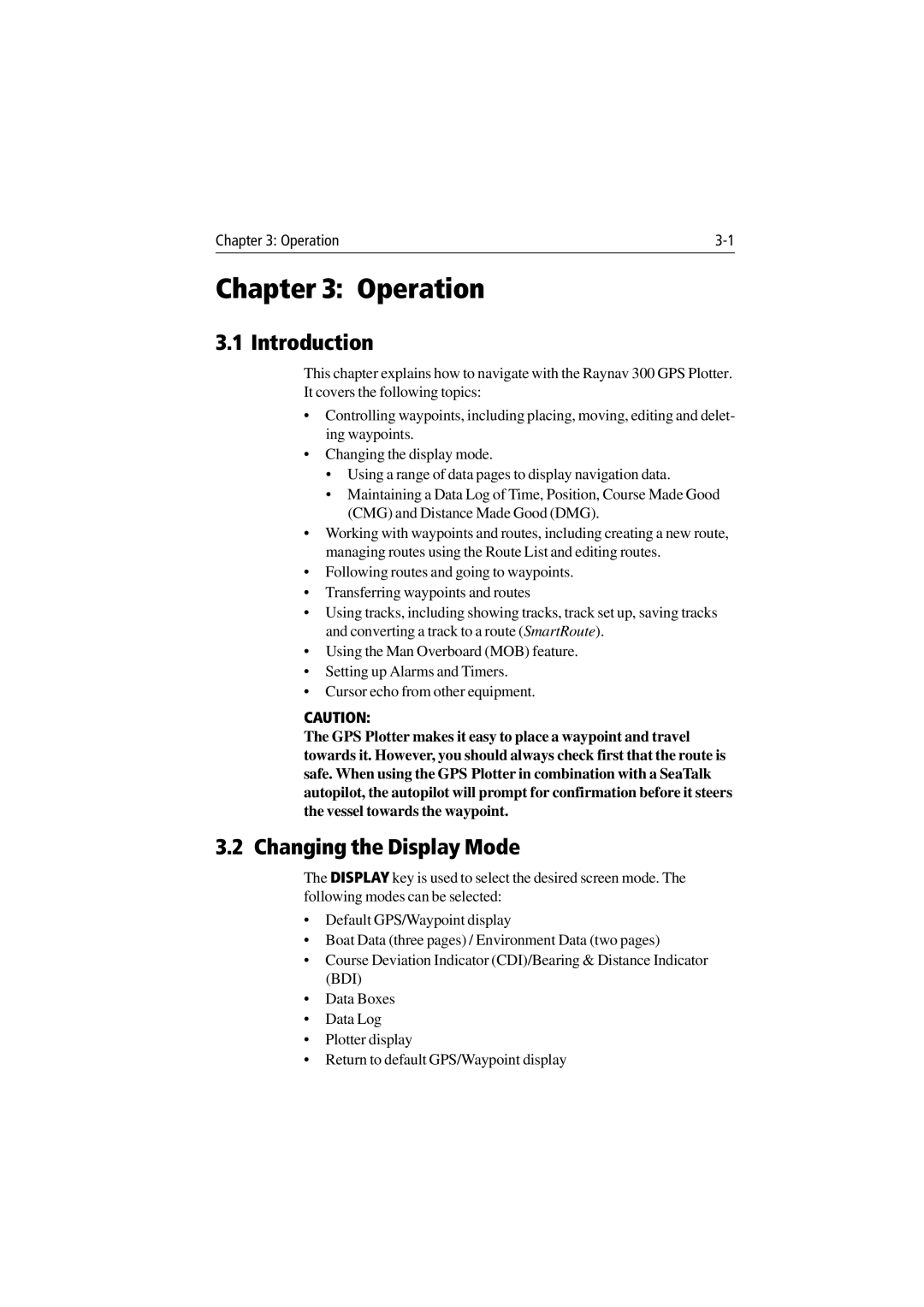Chapter 3: Operation |
Chapter 3: Operation
3.1 Introduction
This chapter explains how to navigate with the Raynav 300 GPS Plotter. It covers the following topics:
•Controlling waypoints, including placing, moving, editing and delet- ing waypoints.
•Changing the display mode.
•Using a range of data pages to display navigation data.
•Maintaining a Data Log of Time, Position, Course Made Good (CMG) and Distance Made Good (DMG).
•Working with waypoints and routes, including creating a new route, managing routes using the Route List and editing routes.
•Following routes and going to waypoints.
•Transferring waypoints and routes
•Using tracks, including showing tracks, track set up, saving tracks and converting a track to a route (SmartRoute).
•Using the Man Overboard (MOB) feature.
•Setting up Alarms and Timers.
•Cursor echo from other equipment.
CAUTION:
The GPS Plotter makes it easy to place a waypoint and travel towards it. However, you should always check first that the route is safe. When using the GPS Plotter in combination with a SeaTalk autopilot, the autopilot will prompt for confirmation before it steers the vessel towards the waypoint.
3.2 Changing the Display Mode
The DISPLAY key is used to select the desired screen mode. The following modes can be selected:
•Default GPS/Waypoint display
•Boat Data (three pages) / Environment Data (two pages)
•Course Deviation Indicator (CDI)/Bearing & Distance Indicator (BDI)
•Data Boxes
•Data Log
•Plotter display
•Return to default GPS/Waypoint display
